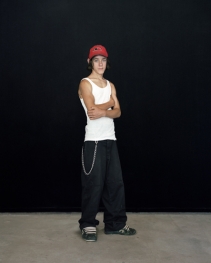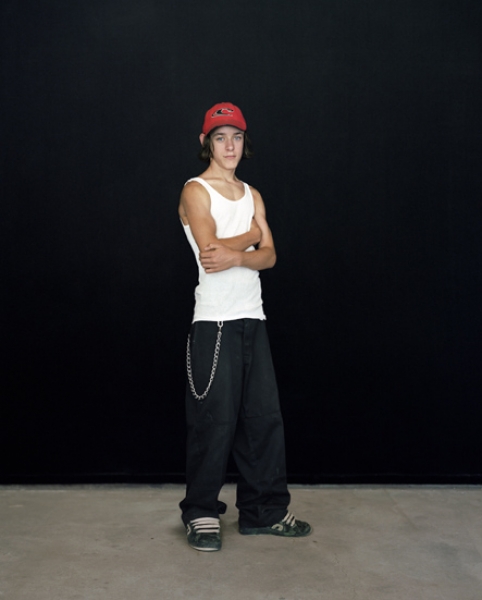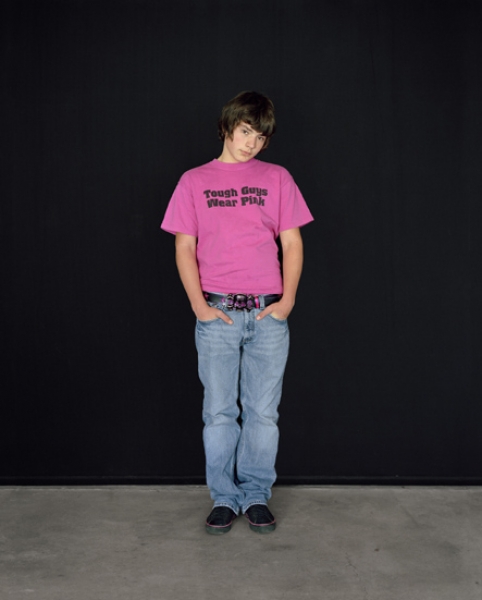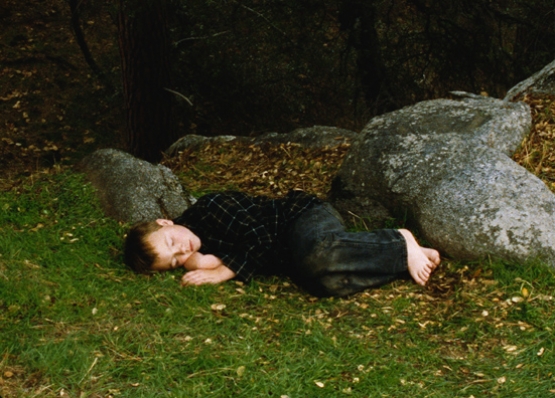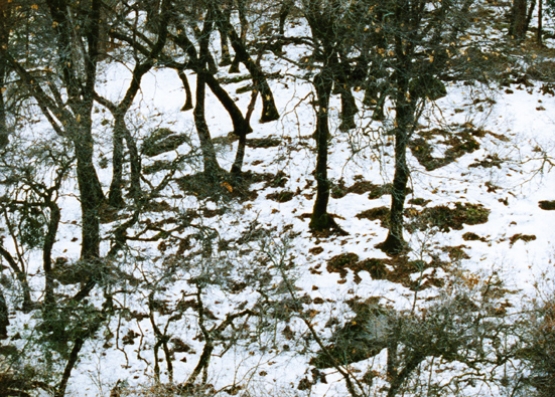European Festival TEMPS D’IMAGES, Lisbon
SHARON LOCKHART
PINE FLAT
4th October 2006 – 7th January 2007
Opening: 3rd October. Tuesday. 7.00 pm
Floor 2
Sharon Lockhart is internationally recognized for her films and photographs that frame the quiet moments of everyday life while exploring the subtle relationships between the two mediums. Much of her photographic work has involved staging scenes in a method reminiscent of filmmaking, while her films emphasize the photographic basis of the moving image. Formally concise, these works examine structure, sequence, and narrative in a way that aligns them with conceptual art and structuralist cinema.
Pine Flat, her newest film and photographic project, will be on view at the Museu do Chiado – MNAC, between the 4th October and the 7th January, 2006, as a part of the Festival Temps d’ Images, Lisbon. Pine Flat was shot over the course of three years in a small town in the foothills of the Sierra Nevada Mountains of northern California and is Lockhart’s first project to centre on a community in the United States of America. By slowly immersing herself in the life of the town, relinquishing a professional film crew, and operating the camera herself, she created an exceptionally intimate view of contemporary rural life that focuses on the interactions of the community’s children, who engage in everyday activities in stunningly beautiful natural landscapes.
Lockhart collaborated with the Los Angeles architectural firm EscherGuneWardena to design a site-specific installation of the film, which was redesigned for the Museu do Chiado – MNAC. Recognizing that the experience of viewing a film is different in a cinema than in a gallery, the installation embraces the various ways that time- based work can be experienced in a gallery setting. The film was divided into the 12 segments that comprise it, which will be shown as individual loops in darkened viewing rooms and rotated over a period of days. Thus, viewers will experience the film differently than they would in a theatre: they will have the opportunity to perceive each segment with the close attention normally reserved for static works like paintings because the segments will be on continuous loops that may be viewed repeatedly; to weave the film’s portrayal of everyday life into the fabric of their own everyday lives should they choose to return to the museum on successive days; and to experience a different social relationship to the film and its subjects, as it is likely that in the gallery they will be alone or in small groups, like the children represented, not as part of a large audience.
Also on view will be a series of 19 photographic portraits of the children entitled Pine Flat Portrait Studio. Intrigued by the 19th-century American tradition of the portrait photographer, Lockhart set up a photographic studio in a barn in the centre of town. She invited the children to come to the studio to have their portraits taken – the first time they had been photographed with a large-format camera. She shot each portrait against a black cloth backdrop illuminated by natural light. This degree of standardization might suggest August Sander’s typological approach to photography. But Lockhart disrupts this logic by scaling all the children to the same height so that they cannot be measured against one another – a strategy that also makes it difficult to discern whether some are represented multiple times at different ages, pointing to the difficulty of locating the continuity of personal identity across the constant flux of time. She also encouraged the children to “act” within their stark theatrical setting, giving them the space to create individual personas for the camera; some came dressed in elaborate athletic gear or brought their most prized possessions. The resulting portraits suggest a simultaneous solemnity and intimacy that mark full-length portraits by painters such as Francisco de Zurbarán and Edouard Manet.
Born in Norwood, Massachusetts, in 1964, Sharon Lockhart lives in Los Angeles. She has had major solo exhibitions at The Museum of Contemporary Art, Chicago; the Museum Boijmans Van Beuningen, Rotterdam; and the Kunsthalle Zürich. Her work has also been included in several Whitney Biennials and other group exhibitions worldwide. Her films have been screened at Sundance and Telluride, as well as at festivals in Berlin, Hong Kong, New York, Rotterdam, Toronto, and elsewhere.
Curator
Pedro Lapa

